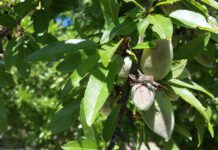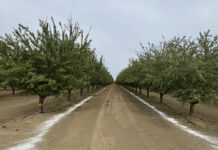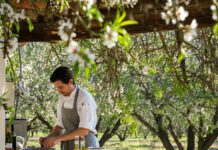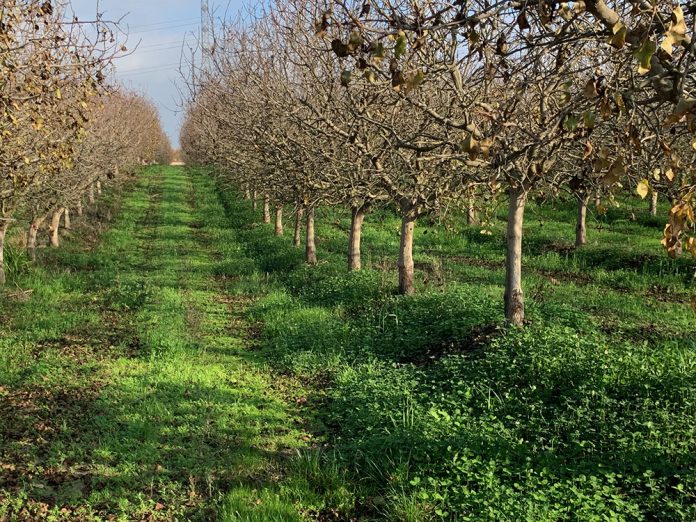
Justin Wylie of Wylie Farms grew up in a farming family but didn’t always plan to work in the industry. He graduated from UC San Diego and shortly thereafter felt a pull back to his roots, joining the family ranch management business at age 25.
After the birth of his son, he began to rethink the way he approached farming. His son faced multiple health challenges, which led to his family learning about clean eating and healing the gut. Their success in helping his son overcome his health challenges led Wylie to wonder if the same approach could be beneficial in his orchards.
“All of a sudden, I had made a connection between what I’m doing on my ranches and what we were trying to do at home with our son,” Wylie said.
He learned about regenerative agriculture, where the focus is on building healthier soil, which results in healthier plants and trees. Beginning with his own 40 acres, Wylie has implemented regenerative practices on citrus and pistachio orchards with promising results. Wylie claims he has been able to greatly reduce crop protection sprays and reduce water usage by 20% while maintaining production and crop quality. Wylie, along with his dad, Craig, and brother, Chase, have extended their regenerative farming practices to 600 acres of both their own land and land the company manages.
We asked Wylie to share with us his thoughts on regenerative farming and the tree nut industry.
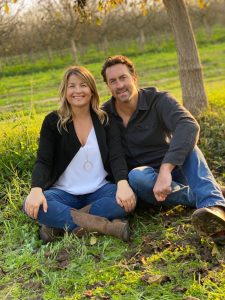
Q. What is the history of your business?
My dad and uncle, Craig and Chris Wylie, were at Chico State going to school up there. They’re from Chico originally, and they started coming down to the San Joaquin Valley for a summer job with Bob Peterson. They worked alongside several other prominent growers including Dave Peterson, who’s up in Chico now, a farmer, and Bill Seaman, a well-known farmer, nurseryman and ranch manager. They budded some of the first pistachio orchards around the early 70s, which was the early days when the pistachio industry was first picking up steam.
After college, they all got into pistachios. At that point, just from learning it during college and under Bob Peterson, that’s where it started. My dad grew up on walnuts then we have some family that were corn farmers from Nebraska. So, we’re fifth-generation, technically, but first-generation pistachio growers. I guess my brother, Chase Wylie, and my cousin, Ryan Wylie, and I would all be second-generation pistachio growers.
Q. How did you get into tree nut farming?
I left for school and took some time away from the industry, not really sure if I would return. Southern California is pretty tough to leave as college kid! I rejoined the family business in 2007 and moved back to the valley a few years later when my wife and I were pregnant with our second child.
We’re ranch managers in Madera, and then we farm some of our own pistachios and citrus.
Q. How has your focus on regenerative farming changed your outlook on farming?
Before I looked at it like when your trees have a disease, a fungal disease, or you have a pest issue, the pest and the disease is the problem. Maybe we’re unlucky. If I’m 44 and I’m getting sick all the time and I’m not healthy and I’m tired and fatigued or whatever else is going on, would I necessarily think that I just got unlucky with my genetics? Or would I really do some searching at some point and say, ‘Is there something I can change in my exercise routine or sunlight exposure, my diet, whatever else?’ But we don’t look at our farms like that. We look at a disease pressure or a nutrient deficiency in the soils almost like we’re unlucky, that it’s a crazy year and we have no control, like we’re floating in the wind.
I’ve come to discover in the last five to seven years that’s not the case. Just like we would treat our health as humans, we can treat our fields the same way. There’s always going to be problems and diseases, but the way our crops respond to those pests and diseases is a function of the health of the soil.
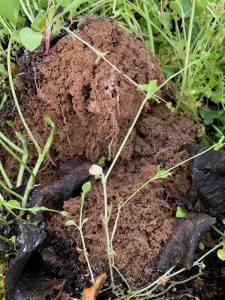
Q. What is it about regenerative ag that’s so appealing?
I’ve gone down that path the last five to seven years, and I’m really excited about the future. Prior to learning about regenerative ag, I had heard those stories about the children leaving the farm, not being interested in farming or getting a job in town and doing both because many kids of farmers weren’t seeing a future in farming.
That’s been multiple generations now, whether you’re a corn farmer in the Midwest or in California. You have a lot of farmers here, even successful farmers, whose kids may or may not be coming back after leaving for college.
A lot of kids are just looking at it going, ‘That’s not the life I want,’ and one of the really cool things about regenerative ag is it’s so exciting to the next generation. Young people are looking at regenerative ag going, ‘Wait, I want to stick around.’ There are even professionals switching careers to join our industry because of the excitement around regenerative farming, and you just didn’t hear many stories like that 10 years ago.
There’s something to this idea of reconnecting with your food and growing food in a manner that focuses on balance and regeneration instead of elimination of pests and disease. It’s a completely different way of looking at overcoming challenges.
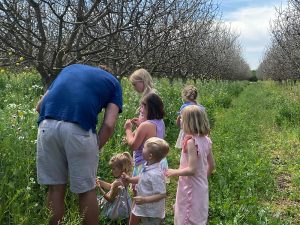
Q. How does regenerative ag provide hope for the future?
On the family ranch management side, we still farm quite a few acres conventionally. Unfortunately, there are often problems that are difficult to manage with conventional sprays and fertilizers. For example, this is one of the worst thrip years we’ve ever had in citrus, in the history of citrus in California. There’s a lot of acreage out there where the farmer just gave up trying to protect the crop and turned it into insurance because, despite their best efforts, it was too damaged to harvest. In this case, many farmers used all the tools available to them. Some treated up to six or seven times instead of the usual once or twice and still couldn’t save their crop. The thrips just kept coming and coming and coming, and there was no answer for it. Almond growers faced something similar. We’re hearing nightmare stories about almond loads coming in at 10% to 15% navel orangeworm damage. That’s unheard of.
This is the new reality we’re facing. Maybe we don’t run into a thrip or navel orangeworm problem like this for another 25 years because it was just a crazy year. Hopefully. But it seems like the pest pressure is only increasing in most crops. I’m sure there are many reasons for this, but we’re being told there aren’t a lot of new chemicals coming down the pipeline in the event our current products are either banned or become less effective.
It’s California and the European Union leading the charge on banning chemicals. So, as growers, we’re not only facing increasing pest pressure but also the possibility of losing access to some of our tools soon. I’m addressing this with the APG board because it’s something we’re all concerned about as an industry. We’re concerned about the constantly changing standards overseas, which in California could create a lot of problems for the conventional grower, even though we are compliant by American standards.
One reason for optimism, on both the regenerative and conventional side is companies are switching their focus over to biological inputs for crop protection and improving fertility and crop resiliency. Biostimulants improve plant immunity and fight pests with products that have a 0-day PHI and no risk of leaving a residue. I spent the last few days at the Crop Consultant Conference in Visalia, and I was amazed at all the advancements in that sphere. I would highly recommend that conference for any grower or consultant looking for a new way.
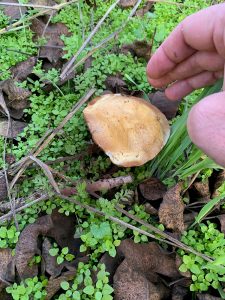
The point is it’s very easy to be pessimistic from a conventional grower standpoint. Crop prices have not been good in the nut crops especially, but in a lot of other markets, there’s overplanting, too. So, from a bird’s eye view, it’s depressing. You’re looking at all these issues and that’s not including labor and water shortages. With the cost of power going up, our equipment prices have skyrocketed. I see that side, but having discovered this whole new realm, attending regenerative seminars and farm tours, it’s full of people who are highly optimistic about the future of farming. We have the ability and opportunity to take on these very complex issues when you start with soil health.
Q. Talk a little bit about what you mean when you’re talking about improving soil health.
No. 1, increase soil organic matter. No. 2, in permanent crops specifically is the microbial balance in the soils between fungi and bacteria. For most soils in California the ratio is roughly 500:1, bacteria to fungi. In a permanent crop like pistachios, increasing the fungal to bacterial ratio improves nutrient cycling and disease resiliency. In other words, more nutrients are available in the soil for your trees to uptake, which means reduced fertilizer inputs and better results. I’ve been building my soil health for five years now, and I’m excited to see my ratios now at 1:1.
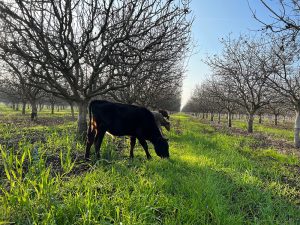
To increase microbial activity in the soil, there are a few things we can do. Build soil structure with cover crops. Avoid suppressing or killing microbes with heavy applications of high-salt fertilizers. Avoid tillage. Keep the soil covered with as much of a variety of plants as possible. Eventually this will recreate the pore spaces in the soil so the soil can breathe again. As you go, I would recommend continually re-inoculating the soil with biologicals along with food sources like humic and molasses. Over time, you will see soil organic matter increase, water infiltration improve and nutrient cycling change completely.
I fully believe that there are things we can do to bring it above the native soils. My native soils on my fence lines are at 5% organic matter, and in the middle of our orchards, I’m sitting at a half to 1%. So, at the very least, I think I can get back to 5%. And if I do, that’s about an additional 100,000 gallons per acre of water-holding capacity.
I’m doing everything I can to avoid hurting the fungal populations in my soil. Not tilling would be the first one, then not using anything, any crop protection, chemical or anything that would actually harm the fungal populations in my soil, anything that oxidizes my soil, anything that would harm fungi, like a copper sulfate. A lot of the water districts are using copper sulfate to keep their systems clean, and growers may not know how much of that is ending up in their soils and whether or not it has an effect.
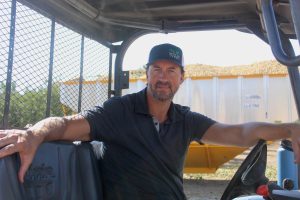
Q. Why do you think regenerative farming is an answer for some of the problems facing tree nut growers?
We’re starting to see more nutrient cycling happening in the soils, and that allows us to reduce our fertilizer use. The question here is can I continue to pay for the inputs and three fungicides and three or four herbicides and spend that amount of money per acre with the cost of inputs and the cost of power and labor in California and still be profitable?
I think the average farmer would say, ‘No, I don’t see a future there. We need to invent our way out of this.’ And up until now, replanting with new varieties has succeeded in doing so. The advancements we’ve made in just total production and the quality we can produce has been phenomenal. But what’s happening is now the system is catching up to the economics because look at what has happened to the price of ground. And what happens to all the other inputs and now labor and everything else? Costs are rising and crop prices are not keeping pace.
We’re at a point now where if you’re a new farmer and you’re not inheriting ground, what do you do? The economics don’t work. You do the math as a farmer. It’s no wonder these kids don’t want to stay. If they’re going to get into the ground to farm nuts, if that’s their passion, you’re talking about a negative return right now.
So that’s the question here: Will this new system of farming work? And that’s what I’m really working through myself and trying to figure out. I’m optimistic about the future because I think, ‘If I can do it in our lower fertility soils in Madera, if we can start improving nutrient cycling, reducing disease pressure, reducing the number of passes through the field with foliars and pest control sprays, if we can grow a more resilient tree and more resilient crop, not lose production, all while reducing costs significantly, that’s the future.’
Maintaining or increasing production and quality with few inputs is the key. They call it the J curve, and the J curve is basically you go organic or regenerative and you see a big dip in production initially. Eventually production comes up, but that could take years. The way many growers traditionally treated transitioning to organic was to farm the exact same way, but with an organic fertilizer or pesticide product that was less effective, took longer to work and cost more.
What we’re doing in regenerative agriculture is different. We are trying to mitigate those issues by focusing on soil health and improving the biology that makes nutrients more available, which adds pest and disease resistance to our crops. This is what helps us avoid that J curve. It’s a lot of fun hearing success stories all over the world. We’ve seen it work in our own fields, that even in the worst conditions where I had major hail events and things like that a couple years ago, I expected a total loss in my pistachios. It’s anecdotal, but I believe that because of our growing practices, we didn’t see a drop in production at all that year.
Q. What kind of successes have you seen with regenerative farming practices?
We had some trees wake up with severe phytophthora this spring, and normally phytophthora is a death sentence. Yet those trees still have a crop on them now and are continuing to recover, even with the summer stress.
Another fun thing we’ve seen in our orchards is our soil managing our noxious weeds. Eliminating nitrate nitrogen from our soils has created an inhospitable growing environment for early successional noxious weeds like fleabane, malva, nightshade, prickly lettuce and horseweed. Instead, our soil favors clovers and perennial grasses. A few years back, my neighbor asked me what I had sprayed to kill off the mare’s tail. He was shocked when I told him I hadn’t sprayed a thing, my soil had done that all on its own.
Q. What about the cost?
In our regenerative blocks, we’re 15% to 20% cheaper and using 15% to 20% less water than in our conventional blocks. We’re saving on the passes. We’re not applying fungicides, not applying herbicides and we have full ground cover. We’re doing a lot of things differently in our fields where we’re able to reduce expenses.
Q. What do you think the biggest challenges are for the tree nut industry, and what are the tree nut industry’s biggest assets?
I’m a huge fan of APG’s generic marketing programs. I don’t think there’s any other way to raise the base demand of our crop, not only domestically, but internationally, too. That’s the way forward. Generic marketing is showing the American farmer, showing the clean, nutrient-dense crop that we’re growing.
Whether you’re farming an almond, pistachio, walnut, pecan, whatever, in a world where we’re trying to get people away from potato chips to eating something healthier, the way to do that and expand markets overseas and domestically is through a generic marketing program.
As for challenges, the biggest one is water. There’s still a lot of uncertainty as we figure out how SGMA will be enacted. At the end of the day, their focus is sustainability and there’s a lot of pressure coming in from the outside.
I also think labor in California is difficult from a direct operator standpoint. I think it’s kind of an old cliche, but for me, those two, water and labor, are still the big ones.
Q. What advice would you give a young person just getting into the tree nut industry?
There are excellent programs out there for beginning farmers with the FSA. I would suggest they look into those, but even those could be difficult to use right now because of interest rates being so high. Leasing and crop sharing could be good options until interest rates come back down. In short, my advice would be don’t overextend yourself, and get creative until the economics make better sense.


